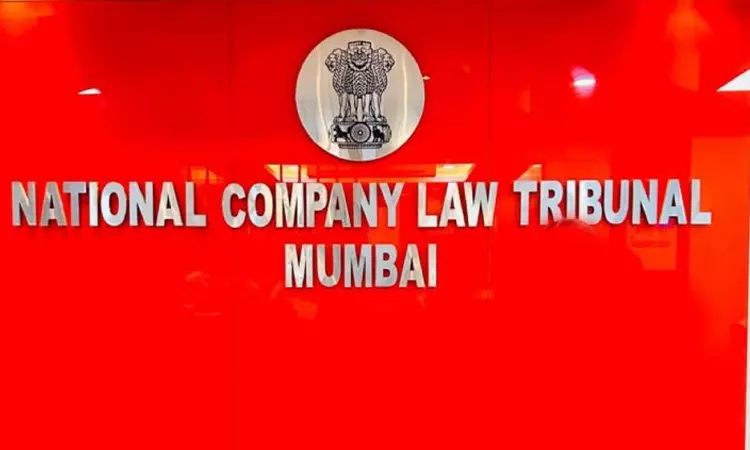NCLT Mumbai Dismisses Syska LED Lights' Plea For Withdrawal Of Insolvency Application U/S 12A Of IBC
Tazeen Ahmed
27 March 2025 7:15 AM
The National Company Law Tribunal (NCLT), Mumbai bench comprising K.R. Saji Kumar (Judicial Member) and Anil Raj Chellan (Technical Member) has dismissed the withdrawal application filed under Section 12A of the Insolvency and Bankruptcy Code (IBC/Code) in the insolvency proceedings of Syska LED Lights Pvt. Ltd (Corporate Debtor). The Tribunal held that once a Corporate...
The National Company Law Tribunal (NCLT), Mumbai bench comprising K.R. Saji Kumar (Judicial Member) and Anil Raj Chellan (Technical Member) has dismissed the withdrawal application filed under Section 12A of the Insolvency and Bankruptcy Code (IBC/Code) in the insolvency proceedings of Syska LED Lights Pvt. Ltd (Corporate Debtor).
The Tribunal held that once a Corporate Insolvency Resolution Process (CIRP) is admitted, it becomes a 'collective proceeding' in rem. The Tribunal observed that it exercises an 'adjudicatory' function in deciding withdrawal applications and is not a mere post office stamping approvals. The Tribunal dismissed the application, stating that allowing such withdrawal would result in multiple litigations and disrupt the insolvency framework.
Background
The CIRP of the Corporate Debtor was initiated pursuant to an order dated 08.10.2024 in CP(IB) No. 96/MB/2024 (Admission Order), passed by the NCLT under Section 9 of the Code. In the meanwhile, an appeal was filed before the NCLAT, which directed that the CoC not be constituted. Thereafter, the NCLAT granted liberty to the OC to file a Section 12A application. A large number of financial and operational creditors filed interventions and objections.
Sunstar Industries (Operational Creditor/OC) filed IA No. 5979/2024 through Mr. Debashis Nanda (Interim Resolution Professional/ IRP) of the Corporate Debtor under Section 12A of the Code read with Regulation 30A of the Insolvency and Bankruptcy Board of India (Insolvency Resolution Process for Corporate Persons) Regulations, 2016 (CIRP Regulations). The OC filed the application to withdraw Original C.P. under which the CD had been admitted into the CIRP.
IA 952/2025 IN CP (IB) No. 96/MB-II/2024: Mr. Rajesh Uttamchandani, Director of the Suspended Board of the Corporate Debtor, under Rule 11 of the NCLT Rules, 2016, prayed to defer hearing of IA in the Main Application along with connected intervention.
Submissions
The Applicant/RP submitted that the mechanism provided under Section 12A r/w Regulation 30A of the CIRP Regulations does not require any “adjudication” by the NCLT, rather, the NCLT only needs to “approve” the same, where the processes and format under Form FA are complete.
Respondent No. 2/ Suspended Director submitted that since the Section 12A application was filed in conformity with Section 12A of the Code r/w Regulation 30A of the CIRP Regulations, the NCLT cannot decline it.
He submitted that the suspended management made payments aggregating ₹5.20 Crore towards IDFC Bank, ₹17.58 Crore towards Unity Small Finance Bank (USFB) and a settlement agreement had been reached, reducing the outstanding amounts.
He submitted that the intervention applications, if entertained, would derail a meticulously planned restructuring process and expose the company to unnecessary insolvency risks.
Intervenors
The creditors of the Corporate Debtor, namely, Fortune Art, Starlite Lamps, ARE Enterprise Private Limited, Dixon Technologies (India) Limited, Qdigi Services Limited, IDFC First Bank Limited, State Bank of India, USFBL, and Shashi Aggarwal filed intervention applications to object to the withdrawal of CIRP against the Corporate Debtor.
They submitted that IBC is not a recovery proceeding. Once an application instituted by a creditor is admitted, the proceeding becomes a 'collective proceeding' or a proceeding in rem. Any settlement or withdrawal without involving all creditors undermines the statutory framework of the Code. The Interveners further submitted that unilateral settlement attempts before the constitution of the CoC is risky, as it may lead to preferential payments to select creditors, contrary to Section 43 of the Code.
Relying on the position laid down in GLAS Trust Company LLC vs. BYJU Raveendran & Ors., they submitted that in cases of withdrawal where CIRP has been initiated but CoC has not been constituted, the NCLT should conduct an adjudicatory exercise under its inherent powers under Rule 11 of the NCLT Rules to reject or accept the withdrawal application after hearing all concerned parties and considering all relevant factors.
The Interveners stated that no settlement proposal was pending their consideration.
Observations
At the outset, the Tribunal considered the locus of other creditors to intervene in the application filed by IRP under Section 12A of the Code read with 30A of CIRP Regulations. The court noted that in Byjus, the Supreme Court reproduced part of the Insolvency Law Committee Report: “it was agreed that once the CIRP is initiated, it is no longer a proceeding only between the applicant creditor and the corporate debtor but is envisaged to be a proceeding involving all creditors of the debtor. The intent of the Code is to discourage individual actions for enforcement and settlement to the exclusion of the general benefit of all creditors.”
The Supreme Court in Swiss Ribbons observed: “It is clear that once the Code gets triggered by admission of a creditor's petition under Sections 7 to 9, the proceeding that is before the adjudicating authority, being a collective proceeding, is a proceeding in rem. …. at any stage where the Committee of Creditors is not yet constituted, a party can approach NCLT directly, which Tribunal may, in exercise of its inherent powers under Rule 11 of NCLT Rules, 2016, allow or disallow an application for withdrawal or settlement.”
In Byjus, it was further observed: “.... the admission of an application is a significant event that alters the nature of the proceedings, and the stakeholders involved …. the proceedings now change character – they become in rem and are no longer the preserve of only the applicant creditor and the corporate debtor and even creditors who were not the original applicants, become necessary stakeholders.”
The Tribunal noted that the NCLAT also directed that all the FCs and OCs who had claims against the CD were free to file their objection before the NCLT at the time of hearing of the 12A Application. The Tribunal held that the Intervenors/Objectors are undoubtedly stakeholders in the CIRP of the CD and have locus to raise their concerns regarding withdrawal of the Original C.P.
The Tribunal held that Section 12A r/w Regulation 30A(6) implicitly gives the NCLT the option to either accept or reject an application based on the facts, consequences, and objectives of the Code. It noted that the Supreme Court in Byjus observed that the NCLT cannot be considered as a post office that merely puts stamp on the withdrawal application. It held that the NCLT does conduct an 'adjudicatory' exercise when the application for withdrawal is placed before it, and the procedure is not a mere technicality.
The Tribunal held that withdrawal of CIRP would lead to multiple litigations, as many creditors of the CD were either waiting to revive their Applications or intending to file fresh Applications to initiate CIRP against the CD. The Tribunal stated that “The intent of the IBC is to discourage individual actions for enforcement and settlement to the exclusion of the general benefit of all the creditors.” The Tribunal reiterated that IBC proceedings aim to preserve and maximise value for all creditors. After admission of CIRP, if private settlement is permitted between the CD and the applicant creditor, the process would create an unfair advantage for certain other creditors.
The Tribunal noted that the total claims received by the Applicant/IRP were about ₹223 Crore. The Tribunal however observed that the ability of the CD to settle its dues with all the creditors is one of the relevant factors for considering the withdrawal application. The Tribunal observed that the efforts made by the CD/suspended directors to reach a settlement with the consortium of lenders had failed.
The Tribunal dismissed the IA in the Main Application. The intervention applications became infructuous.
The Tribunal rejected IA 952/2025. The Tribunal stated that sufficient time and ample opportunities had been granted to the Applicant and the CoC to settle the matter; no purpose would be served by adjourning the proceedings in the Application any further.
Case Title: Debashis Nanda, Interim Resolution Professional, Syska LED Lights Private Limited vs. Sunstar Industries &Anr.
Case No.: IA.No.5979/2024 In C.P.(IB)/96(MB)/2024; Intervention Petition/9/2025; Intervention Petition/10/2025; Intervention Petition/16/2025; Intervention Petition/19/2025; Intervention Petition/24-27/2025; IA.No.822/2025; IA.No.564/2025; IA.No.1006/2025; IA 952/2025 IN CP (IB) No. 96/MB-II/2024
Date of Order: 18.03.2025
Click Here To Read/Download The Order

